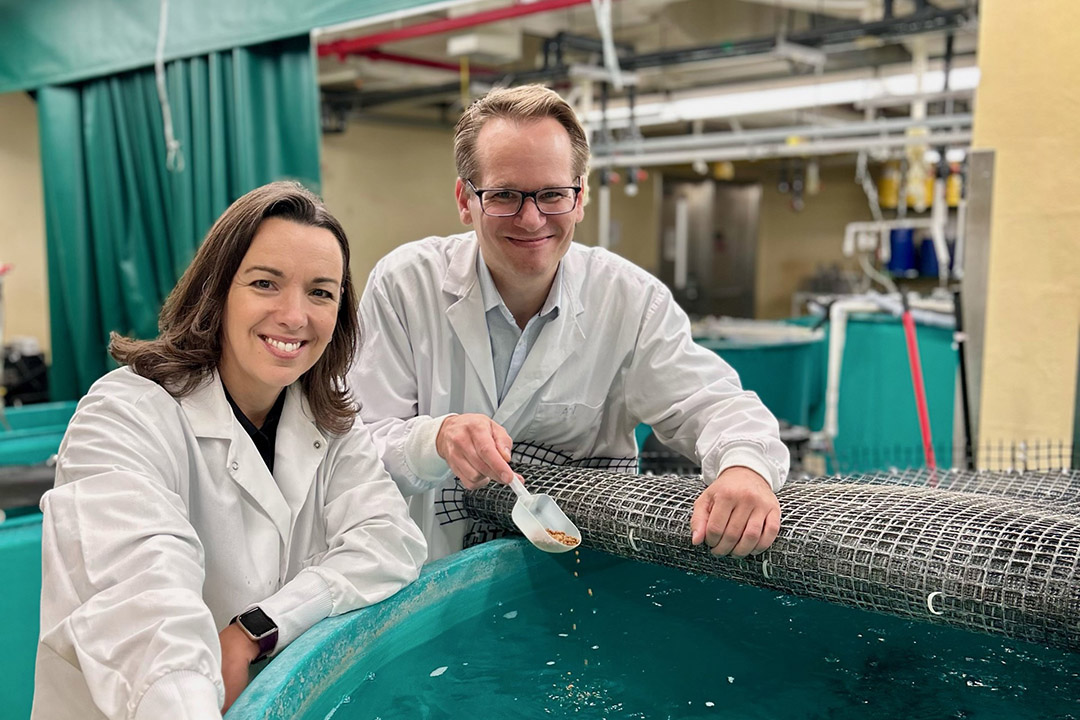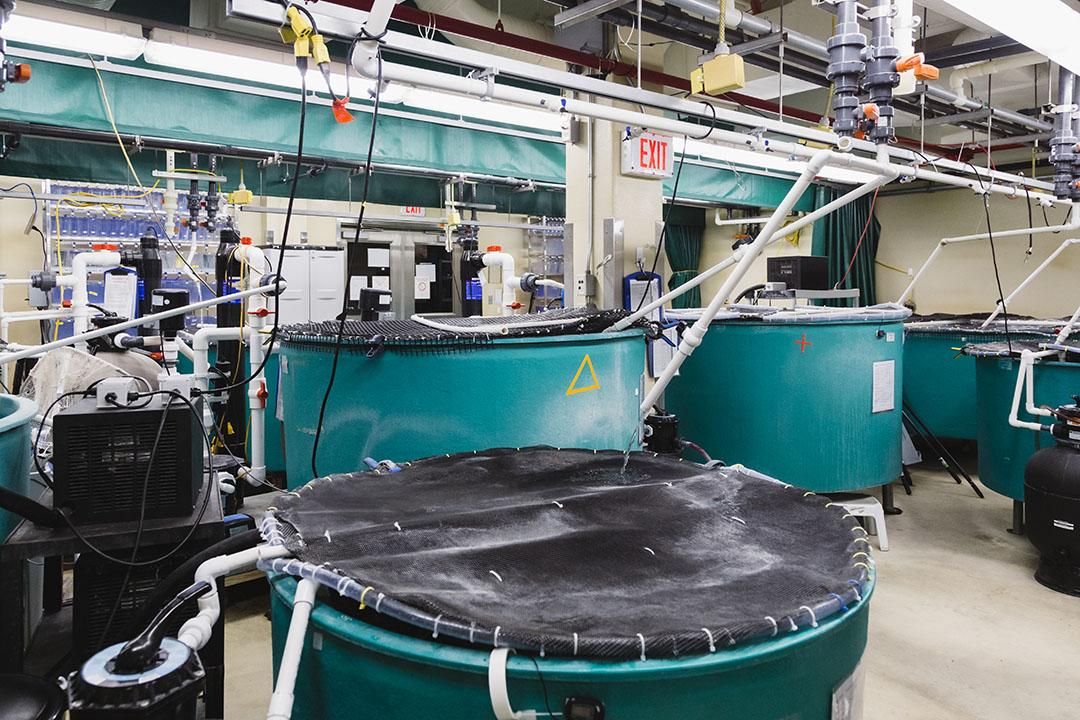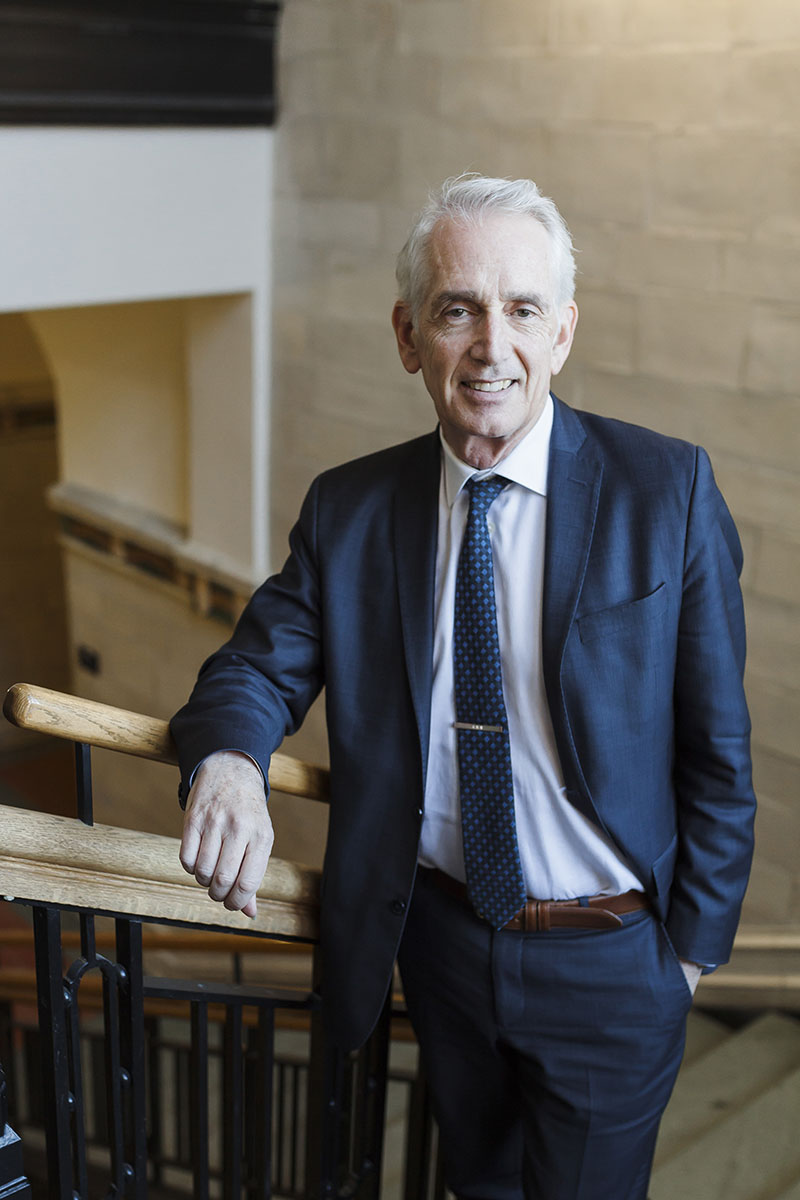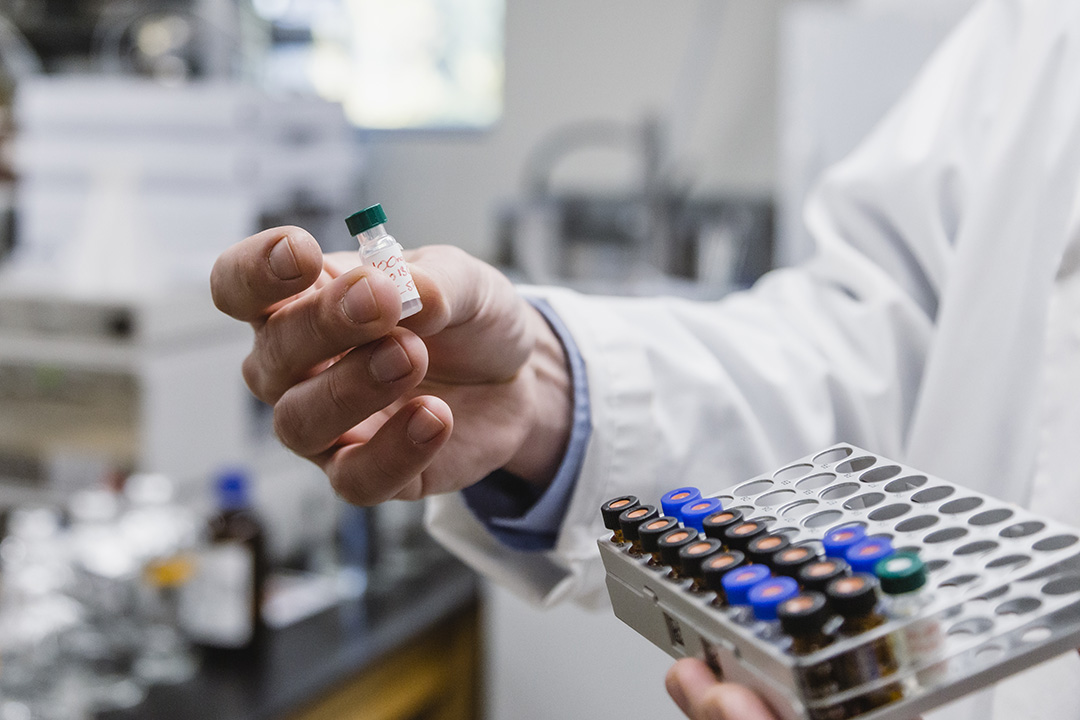
The toxin detectives at the University of Saskatchewan
When coho salmon in the Pacific Northwest came floating downstream belly up after waiting for rainfall that would enable them to swim to their spawning grounds, scientists were puzzled. The cause for this mass mortality event was not immediately obvious – and the resulting uncertainty hampered mitigation efforts.
By Western Schools Report via Globe and MailSimilar to a good detective story, a decade-long search for answers started with casting a wide net for potential suspects – and ended with the positive ID of the culprit: a chemical called 6PPD, says Dr. Markus Brinkmann (PhD), associate professor in the School of Environment and Sustainability and director of the Toxicology Centre at the University of Saskatchewan (USask), whose team examined the toxicological workings and impacts of 6PPD.
Aiding the investigation was a process called high-resolution mass spectrometry, which enables scientists to look at the entire lineup of chemicals present in a particular environment. “Using a set of chemical tools allows us to study complex samples and mixtures and identify the chemicals responsible for specific events,” says Dr. Brinkmann. “In this case, 6PPD, which is used in tires to protect them from becoming brittle, was shed on the road and became oxidized to form 6PPD-quinone.”
When this compound enters waterways as roadway runoff, it is “super toxic to salmon,” he says. “It’s one of the most toxic chemicals known to kill salmon in the nanogram-per-litre range. Just picture throwing a couple grains of salt into an Olympic-sized pool.”
While these findings were “eye-opening for everyone,” the detective work was far from done, as stakeholders needed to understand why the molecule was so toxic – and whether it affected other fish species as well, Dr. Brinkmann says. “Through follow-up studies, our group determined that other common test species, such as rainbow trout and brook trout, are also strongly affected. However, other species, including white sturgeon, fathead minnows and white suckers, didn’t show any sensitivity to this chemical, which is really puzzling.”
Toxicology research at USask includes a unique blend of methods ranging from molecular and chemical analyses to studies on how organisms respond to chemical exposure on a cellular level. This is complemented by going into the field to look at populations of fish and other aquatic animals – as well as identifying the pathways by which chemicals enter aquatic systems, for example, through municipal or industrial wastewater.
“We’re interested in human impacts on water systems,” says Dr. Natacha Hogan (PhD), associate professor in the Department of Animal and Poultry Science at USask’s College of Agriculture and Bioresources and a member of the Toxicology Centre. “We look at what is put into our water systems – either intentionally or inadvertently – and how this affects the dynamics in freshwater systems, including fish health.”

End-of-pipe effluent coming from industry or households often represents “a complex mix that could contain pharmaceuticals, chemicals from personal care products, cleaning agents, detergents and other compounds, plus roadway runoff like road salts and pesticides,” says Dr. Hogan. “Mixture toxicity is often highly complex. You need to become a detective to identify what groups or chemicals cause toxicity so you can devise treatments or measures for reducing this toxicity.”
What can make such investigations challenging are “events we don’t anticipate,” she notes. “For example, our use of chemicals changed significantly with the COVID-19 pandemic. As we started to rely much more on sanitizers and cleaning agents, this was reflected in the composition of our wastewater.”
Changes in human activities, in this case aimed at creating better health outcomes by reducing microbial pathogens, can lead to unintended downstream effects, and Dr. Hogan cautions that increases in volumes of – or even substitutions for – certain substances can affect the overall balance of chemicals in water systems, leading to “emerging contaminants of concern, where we don’t know their toxicity to fish and other organisms.”
Dr. Hogan’s group is currently examining whether “emerging antimicrobial compounds” that have seen increased use during the COVID-19 pandemic have similar toxicity to fish and other aquatic organisms as compared to the well-known antimicrobial triclosan. This chemical has been either banned or significantly limited in its use worldwide, due to concerns over its toxicity and potential for antimicrobial resistance. While antimicrobials usually do not cause rapid mortality in fish, they can upset the delicate balance of important microbes on their gills and body as well in their intestine, which can negatively impact the health of fish.
Enabling the study of such complex and dynamic systems – from human and veterinary toxicology to environmental toxicology – is an impressive research infrastructure at USask, which Dr. Brinkmann refers to as “toxicology wonderland.
“Most labs don’t have the capacity to work on cold-water native fish species of relevance to Canada since this requires big tanks with lots of cold clean water,” he notes. “Our Aquatic Toxicology Research Facility [ATRF] is unique in terms of equipment, infrastructure and talent, making it a top destination for toxicology research globally. We also have a fleet of research vessels for going into the field.”
World-class infrastructure and interdisciplinary collaboration

The ATRF is part of the university’s “unparalleled science infrastructure,” says USask President Peter Stoicheff. “We have a range of world-class labs and facilities, such as Canada’s only synchrotron facility, the Canadian Light Source, and the Vaccine and Infectious Disease Organization [VIDO]. Other leading research centres include the global institutes for food and water security, which bring together teams from different disciplines, different organizations and even different countries to look for solutions to some of today’s most pressing challenges.”
Another leading endeavour hosted at USask is Global Water Futures, the biggest university-led water research program in Canada – and one of the biggest in the world.
“All these efforts have been inspired by the realization that the larger challenges that face the world aren’t going to be solved by a single discipline. And they’re not going to be solved by a single university,” says Dr. Stoicheff. “They can only be solved by people from a variety of disciplines and backgrounds working together.”
Research hubs allow faculty and researchers to come together and “discuss new solutions or novel strategies for approaching big challenges, such as environmental water quality issues,” says Dr. Hogan. “There is an important knowledge spillover effect for our students. It means the next generation of scientists gets exposed to people working in their core area as well as experts across different disciplines.
“Students not only get the benefit of gaining a wider perspective on their project – they also learn valuable competencies that allow them to communicate and collaborate effectively,” she adds. “This makes them sought-after candidates in the job market later on.”
USask’s research infrastructure – paired with an impressive convening power – have helped to attract researchers and students from over 130 countries around the world, Dr. Stoicheff explains. “They are all converging here because of our excellent facilities and interdisciplinary environment.”

While the focus on cross-disciplinary collaboration is intentional, certain conditions work in the university’s favour. For example, “with 17 colleges and schools, there is a high number of disciplines represented on campus,” he says. “We’re one of the top 15 research-intensive Canadian universities. And we’re the smallest in this group – so coming across potential partners from a variety of different disciplines happens quite naturally for our researchers.”
USask also encourages collaboration among colleges and schools through its nine signature areas of research, which include Agriculture, Communities and Sustainability, Indigenous Peoples, One Health, Water Security, and more, says Dr. Brinkmann. “These fields have been identified by the campus community to be of strategic importance – and there are concerted efforts to bring teams together to collaborate on research related to these topics, including in toxicology.”
Tangible results reach well beyond the university’s campus, according to Dr. Stoicheff. “Among the recent list of the 425 fastest growing companies in Canada, seven are located in Saskatoon, and five of these were started by USask graduates,” he says. “There is a very close connection between our research and the dynamic innovation ecosystem in Saskatoon.”
From insights to impact
Translating knowledge into concrete outcomes is also an important focus for the Toxicology Centre team, says Dr. Hogan. “For our results to have an impact, they need to be communicated to a range of stakeholders, including industry, government and regulators so that laws, regulations – and interventions – are based on solid scientific data.”
That’s why “we are not seeing ourselves as academics sitting in ivory towers anymore,” notes Dr. Brinkmann. “We actually need to be connecting with communities and actively seeking [outreach] opportunities.”
The detective work that helped identify 6PPD-quinone, for example, was just the beginning, since it led to the big question on how to solve the problem. Dr. Brinkmann and his colleagues propose two potential avenues for moving forward.
“One, you can address 6PPD at the source: the tire. We recently had meetings with the tire industry and researchers to help identify steps for replacing this chemical without impacting passenger vehicle safety and while avoiding regrettable substitutions,” he says. “The other option is to work with stormwater utilities to prevent untreated roadway runoff from entering streams.”
The team works closely with municipalities to protect fish from harm and – by extension – protect the economy, says Dr. Brinkmann. “These species are important for commercial, recreational and Indigenous fisheries. Salmon are also culturally significant to many First Nations people.”
First Nations in the Columbia River area have used the concept of Wy-Kan-Ush-Pum – “we are all salmon people” – as a rallying call to all coastal people in the Pacific Northwest to protect and restore salmon stocks.
The toxicology detectives at the University of Saskatchewan have provided important insights and pathways to action for one of the many challenges affecting salmon populations, which have declined dramatically due to the complex issues affecting their habitat in both freshwater and marine environments.
“We have to approach such challenges with a systems-thinking mindset so we can solve one problem without creating another,” says Dr. Brinkmann. “And toxicology obviously has a role to play in that.”
Article re-posted on .
View original article.
Together, we will undertake the research the world needs. We invite you to join by supporting critical research at USask.

